TALLADEGA SPEEDWAY - TALLADEGA AL
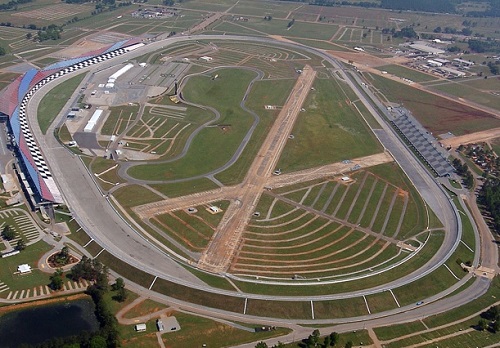
During the 1960s, William "Bill" France, Sr. wanted to build a track faster and longer than his Daytona International Speedway. After failed attempts to reason with local government in Orange County, North Carolina, with the Occoneechee Speedway, he attempted to find a new spot for a race track and make his idea a reality. After failing to secure a location near the research triangle around Raleigh, France then looked around between Atlanta and Charlotte around Greenville, South Carolina to build the track as it would take away business from the tracks there. However, Sunday blue laws prevented races from being held on Sundays in the state of South Carolina. (The Southern 500 was held on Labor Day itself back in the day), after failing to agree to terms with the government, France set his sights elsewhere. He then looked between Atlanta and Birmingham along
Interstate 20. With the support of Gov. George Wallace, France broke ground on an old airfield 47 miles east of Birmingham and 100 miles west of Atlanta on May 23, 1968. The track opened on September 13, 1969, at a cost of $4 million. The track was named the "Alabama International Motor Speedway". The name would remain for twenty years until 1989, when the facility's name was changed to "Talladega Superspeedway". Numerous strange occurrences at the track have led to rumors of Talladega being cursed. Stories of the origin of the curse vary. Some claim that a local Native American tribe held
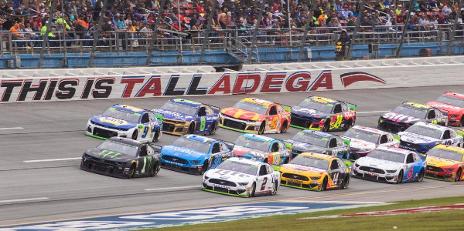
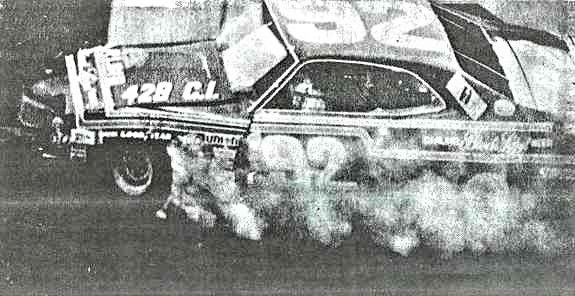
Larry Smith Fatal crash 1973
horse races in the valley where the track currently resides where a chief was killed when he was thrown from his horse. Others say that the site of the superspeedway was once an Indian burial ground. Still another version says that after the local tribe was driven out by the Creek nation for their collaborating with the forces of Andrew Jackson, a shaman put a curse on the valley. Since the construction of the track, many unusual events and untimely deaths have fueled the rumors of a jinx or curse. In the 1973 Talladega 500, NASCAR Rookie of the Year Larry Smith died of massive head injuries in a solo crash, one that was reported by commentators as a heavy hit, but believed by no means bad enough to be
fatal. Later in the same race, driver Bobby Isaac pulled his car into the pits while leading; parked his car and announced he was quitting racing; he did not participate in another 1973 race. Isaac explained, "Something told me to quit. I don't know anything else to do but abide by it." In the 1975 Winston 500, Randy Owens, brother-in-law of Richard Petty and a crew member on the family team Petty Enterprises (father of current NASCAR Cup Series crew chief Trent Owens), was killed by an air tank that exploded in the pits. In the other race in 1975, Tiny Lund was killed in a big crash on the back straight. To some, Bobby Allison's wreck in 1987 described above was yet another
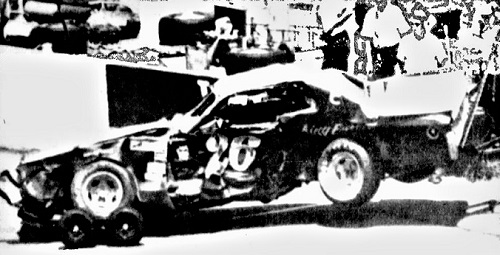
Tiny Lund car after fatal crash 1975

reminder of the curse. In 1993, his son, Davey Allison, died in a helicopter crash in the infield of Talladega. In the first race at the track, all the original drivers aside from Bobby Isaac, Richard Brickhouse, Jim Vandiver abandoned the track due to tire problems, which forced France to hire substitute drivers, the winner being Brickhouse. After the first race, Talladega hosted two Cup Series races a year. The Fall race was known for going such a long time without a repeat winner. It even became a great advertising gimmick to get fans to watch to see if the streak would continue. From the first race where Richard Brickhouse won; it was 15 years before Darrell Waltrip became the first two time winner. It is also know for "long shot" drivers to claim victory. Many drivers claimed the first (or only) win here at the track. Among those are: Richard Brickhouse; Dick Brooks; Lennie Pond; Ron Bouchard; Bobby Hillin; Davey Allison; Brian Vickers; Ricky Stenhouse; and Bubba Wallace. Bobby Allison's Buick tore down a 100-foot section of Talladega's front stretch fence in 1987, marking the impetus for restrictor plates designed to help keep cars under 200 mph and on the pavement.
Spectators are not immune to the "Talladega Curse". This writer recalls one race I attended, and the grass in the parking lots was kind of high and very dry. Seems a car parked in the lot and the hot exhaust from it managed to set the grass on fire. Several cars were destroyed. Bill Elliott set the NASCAR record in qualifying at 212.809 mph for the 1987 Winston 500. In 1985, he pulled off an amazing feat. While leading, suddenly the car billowed a huge plume of smoke and headed down pit road. Everyone thought he'd blown the powerplant on his fast Ford. After a quick examination it was determined that the power steering hose had blown off and the motor was
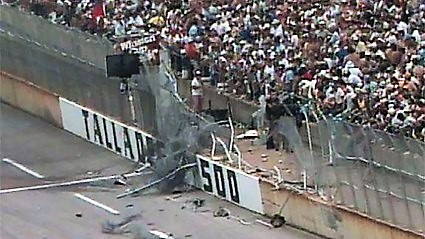

fine. The crew clamped off the hose and sent Bill back onto the track. He pulled back on the track just in front of the leaders; almost two laps behind. Now this was an unusual race and cautions were few. We know how much faster cars are in a draft in a track like Talladega; but it was no bother to Elliott that day. He run down the field and passed the leaders to get back to one lap down.... then he run them down again to take the lead. ALL this UNDER GREEN. He made up over five miles without benefit of a yellow. Engine builder Ernie Elliott sure had a stout pony under the hood that day. Elliott went on to win the race
and afterwards NASCAR tore that car apart from front to rear. The verdict: The car was 100% legal in every way. In 2021, Darrell "Bubba" Wallace would have luck smile on him. Black clouds moved in, and rain was certain to fall shortly. Somehow, Wallace found himself in the lead after Kurt Busch had pushed him to the front. Then there was a big crash on the back stretch that would certainly take a while to clean up. Before they could get the track clean; the skies opened up in a torrent of rain. The race was called official; and Wallace had claimed his first career Cup win. Wallace became the first black driver to win a Cup race since Wendell Scott in 1964.

All Photos copyright and are property of their respective owners
